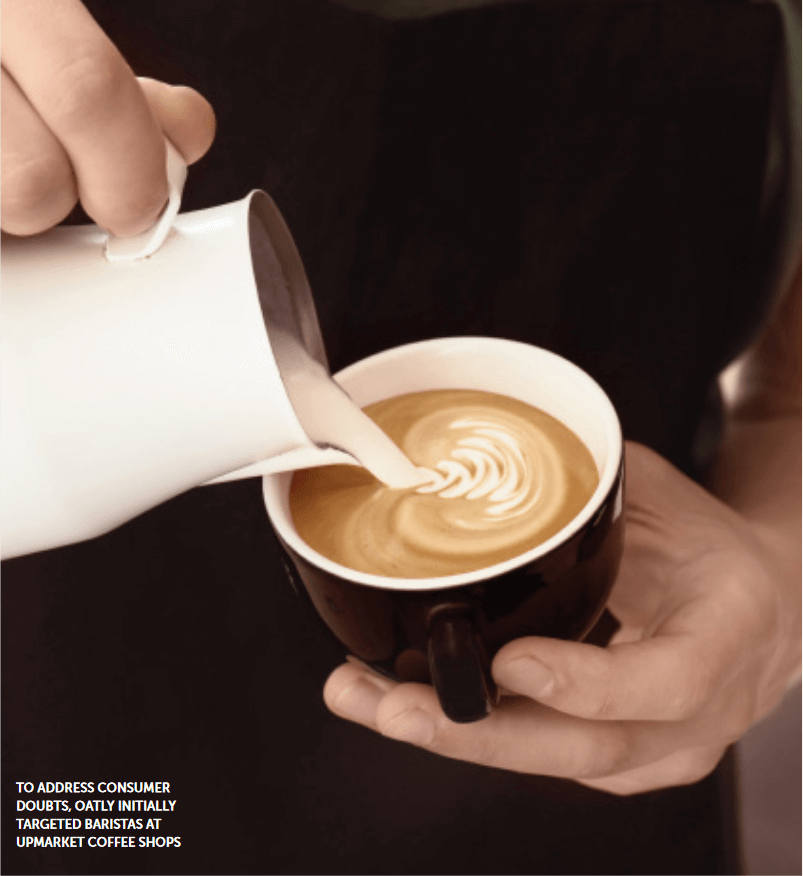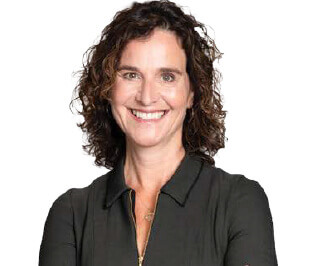Alt-marketing confidence
Any marketer out there wondering whether they have the confidence, the chutzpah, the sheer bravado to make it in our hyper-competitive discipline should ditch the introspection and do what any good marketer should do, multiple times, every day: turn their gaze outwards, to the consumer.
It can be grounding, and humbling, to recognise that there, too, confidence is an issue. Or rather, lack of it. Maybe they haven’t yet tried your brand. And maybe, in a low-key kind of way, they’d be curious, at least, to give it a go. Which is great.
But something stops them – a mini lapse of confidence to lay out cash on something untried, when the normal repertoire of brands serves them pretty well. It’s not a big crisis moment – this is just a purchase decision, after all – but it is there.
Recognising that feeling, empathising with it and working back from it to resolve the tension is the surest way for a marketer to cut through the shibboleths of our discipline, challenge the seeming certainties and do things in a way that will appear, to the outside world, brazen and brilliant, even though that wasn’t the motivation at the outset. True marketing confidence starts here – by imagining ways to build it in the person at the other end of the chain.
A ready-made example would be nice at this juncture and, as it happens, one was unveiled at last year’s massive ‘Masters of Marketing’ conference, held by the US Association of National Advertisers (ANA) in Orlando. In a packed second-morning session, Mike Messersmith, general manager of Oatly US, talked about how the team had successfully brought the Swedish ‘alt-milk’ to the US consumer.
The were some tailwinds to help them along: an increasingly health-conscious population and a willingness already in place to consider non-dairy milk in the daily routine. But the big headwind was the off-putting idea of oats: it seemed an odd basis for a milk and didn’t suggest a particularly pleasant taste experience.
The aim, naturally enough, was penetration, which, in turn, was dependent on trial. Yet the brand initially chose to focus on a target representing maybe 0.1% of the US population: baristas working at upmarket coffee shops.
The reasoning comes back to consumer confidence. As Messersmith told it, even for a consumer interested in giving it a go, taking home a $5, half-gallon pack and facing the verdict of family or housemates represented a high-stakes trial.
On the other hand, if they could try it in a $2 latte – with a bit of professional barista endorsement to help – the stakes were lower and the trial more relaxed. Since oat milk blends better with coffee than other alt-milks, customers were soon asking for it and coffee shops, along with supermarkets, were selling it.
The brand also communicated directly with consumers, of course – if nothing else, the pack is a medium in its own right, an opportunity to give reassurance on taste. So, were there big pouring and product-enjoyment shots? Was there punchy prose about the great taste of oats? Well, that’s what a marketing team on autopilot might do, playing to the routine rules of the marketplace. But a team engaged more intimately with consumers, understanding their reasonable doubts, might imagine ways to be more credible.
What Oatly did was devote a whole side of the pack to a panel of copy under the bold headline: “This tastes like sh*t!” This was a verbatim from one of the early focus groups to gauge customer appeal, and made way for the observation that taste is personal and, while Oatly is rich and distinctive, it may not be for everyone.
SELF-DEPRECATION
Accompanying this disarming candour was a friendly, almost back-room visual vernacular. No product shots but plenty of offbeat, self-deprecating messaging, which it took out into the neighbourhood on ‘surfaces’: posters, walls and benches.
Oatly is a print brand. It doesn’t do much in digital or social media. And, if you think about the aim of defusing the perceived strangeness of the product, you can see why. Being present on the streets, where everyone knows that everyone else will see it, is more ‘normalising’ than sniping at individuals alone with their devices.
The combination worked. Introducing a sub-category completely unknown in the US before 2016, Oatly overcame initial consumer doubt to grow 15-fold in two years.
You can imagine how inspiring it must have been for marketers in that ANA audience to hear about the success of a marketing team at the top of its game, with the courage to do things differently.
AGAINST THE GRAIN
Except it wasn’t quite like that, because, as Messersmith explained towards the end of his session, Oatly US has no marketing department. No CMO. No marketers. No agency, either, come to that. It’s all done by the management team and an in-house creative director.
And, you know, I can’t help wondering if Oatly’s alt-marketing approach would ever have got off the ground if they’d had professional marketers on board. The kind who ‘know’ what works and what doesn’t, what’s done and what isn’t, because they’re on the receiving end of the constant drip-drip of insider intelligence.

Micro-targeting? The evidence-based crowd would have ridiculed them for that. Offbeat candour? That used to be done but isn’t now because what we professionals hear, all the time – even from supposedly neutral research agencies – is that you have to be emotional to affect behaviour. Print? Nobody even talks about that. It’s like a dead advertising art.
And no social media? How does that work? Well, here’s how it worked when Oatly ran into an embarrassing product shortage: the team sent out personalised, handwritten apology notes. Handwritten! Never mind analogue marketing in a digital age, these guys would probably use carrier pigeons if they thought the symbolism apt.
Oatly US may have no marketers but it clearly has plenty of natural marketing talent. The advantage it has over the talented professionals who spend their lives inside the marketing tent is that of distance. At one remove from the buzz, the blogs and the tweets of our excitably communicative discipline they are free not so much to bust our fashionable constructs as to be blissfully unaware of them.
So, taking a leaf from Oatly’s book, perhaps I can expand on the counsel I offered to the confidence-challenged marketer at the top of this column:
Listen to the currently-in-vogue marketing mantra a bit less; even though much of its wisdom will be grounded in generalised truth, it may not be applicable to the specifics of your business situation.
Listen to the consumer a bit more – especially the reasons why they might not be confident enough to try your brand, which can often be more illuminating than the praise of brand evangelists.
And then – assuming you’ve done that with diligence and sensitivity – don’t be afraid to listen to yourself.
